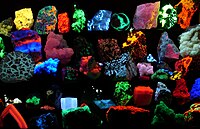
Photo from wikipedia
Abstract Currently, the efficient detection of fingerprints is essential for the crime investigations. Revealing fingerprints is commonly achieved with fluorescent organic compounds but they are not efficient for fingerprint detection… Click to show full abstract
Abstract Currently, the efficient detection of fingerprints is essential for the crime investigations. Revealing fingerprints is commonly achieved with fluorescent organic compounds but they are not efficient for fingerprint detection on porous or reflective surfaces. In order to solve the problem of collecting fingerprints on porous/reflective surfaces, inorganic phosphors have been employed, since they have characteristics of variable color emission, afterglow, high chemical stability and nano-size, which allow the fingerprint detection on any porous or non-porous surfaces. Due to these last properties, this review presents a summary about the use of phosphorescent and fluorescent phosphors for the detection of latent fingerprints. First, we discussed the main physical and chemical characteristics of the fingerprints which permit their detection and collection from any surface. After this, we presented the main morphological, structural and luminescent properties of the phosphorescent and fluorescent phosphors that allow their use for fingerprint detection. Later, we demonstrated with pictures of fingerprints (with and without light emission from the phosphors deposited on them) that both, phosphorescent and fluorescent phosphors can be used to visualize fingerprints with high resolution and high contrast without interference of the background surface, which is ideal for its collection and registration in the Automated Fingerprint Identification System (AFIS). We believe that this review could be useful to understand how to select an appropriate phosphorescent or fluorescent material for fingerprint detection depending on the type of surface (porous or non-porous, reflective or not reflective) where the fingerprint is deposited.
Journal Title: Ceramics International
Year Published: 2021
Link to full text (if available)
Share on Social Media: Sign Up to like & get
recommendations!